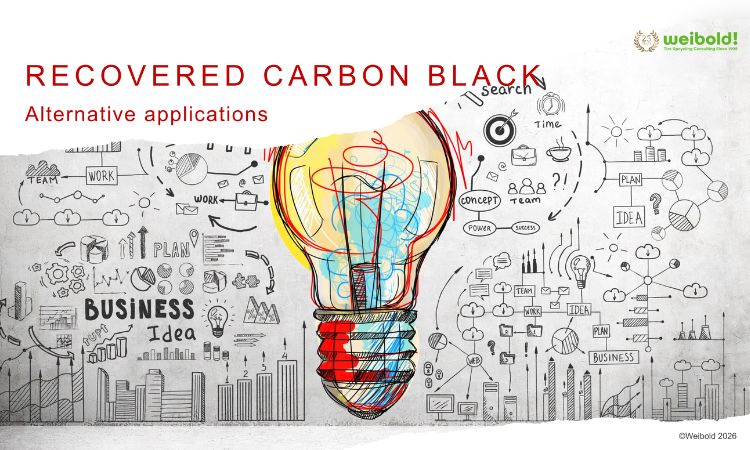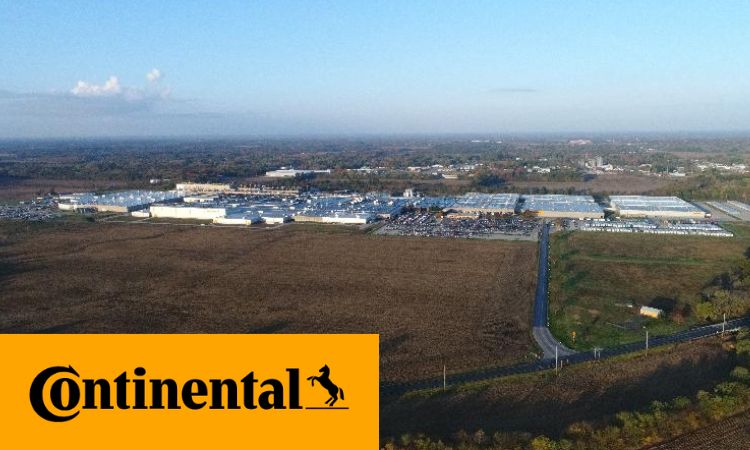Weibold Academy: Regulatory issues in chemical recycling of end-of-life tires – EU regulations (part I)
Weibold Academy article series discusses periodically the practical developments and scientific research findings in the end-of-life tire (ELT) recycling and pyrolysis industry.
This article is a review by Claus Lamer – the senior pyrolysis consultant at Weibold. One of the goals of this review is to give entrepreneurs in this industry, project initiators, investors and the public, a better insight into a rapidly growing circular economy. At the same time, this article series should also be a stimulus for discussion.
In the last few months, we have dealt with various technical topics in this series of articles. With the current article we are starting a new series of articles dealing with the publications on the classification (and challenges) of chemical recycling of end-of-life tires in the legal framework of the EU and the USA.
For the sake of completeness, we would like to emphasize that these articles are no legal advice from Weibold or the author. For legally binding statements, please refer to the responsible authorities and / or specialist lawyers.
The European Chemicals Agency
First, it seems important and necessary to agree on definitions that comply with the regulations and international standards. The attempt to create new names and definitions, e.g., to differentiate oneself from the (few) competitors, often only leads to misunderstandings and confusion.
The International Organization for Standardization (2008, 2013) defines chemical recycling as a production of new raw materials by changing the chemical structure of polymers (e.g., plastic, rubber) through depolymerization, excluding energy recovery and incineration. Whereby depolymerisation is understood as a reversion of a polymer to its monomer(s) or to a polymer of lower relative molecular mass. This irreversible chemical decomposition (depolymerization) in pyrolysis processes is caused solely by a rise in temperature in an inert or oxygen free environment (UIPAC, 2021).
The chemical recycling of end-of-life tires (ELT) through pyrolysis is therefore a recovery operation by which waste materials (ELTs) are reprocessed into chemical products (recovered Carbon Black and tire-derived oil (TDO)) to become input feedstock for chemical plants and other industries.
As feedstock for chemical recycling of end-of-life tires is waste, governed by the EU waste legislation (WFD, 2008), but the output (product) falls under the regulation of chemical substances and articles, product safety and other sectorial legislation (REACH), the role of chemical ELT recycling is twofold: it is a means for achieving both the circular economy goals and efficient waste management.
Chemical recyclers (of end-of-life tires) are both waste managers and manufacturers of new substances who must comply with waste management and chemicals legislations (ECHA, 2021).
The EU taxonomy regulation
The Taxonomy Regulation (EU, 2020) contains the criteria for determining whether an economic activity is to be classified as ecologically sustainable (Taxonomy) and to be able to determine the degree of ecological sustainability of an investment. It is a key piece of legislation that aims to contribute to the European Green Deal by promoting private investments in green and sustainable projects.
Under the Taxonomy Regulation, financial market participants, e.g., investment funds who want to market a financial product as ecological, are obliged to report on the proportion of ecologically sustainable investments in their portfolio within the meaning of the regulation. Companies that are obliged to submit non-financial reporting under EU Directive 2014/95/EU (so-called CSR Directive) must in future include information in their non-financial statements about how and to what extent the company's activities involving ecologically sustainable economic activities. The overarching goals of the Taxonomy Regulation, which is binding in its entirety and directly applicable in all Member States since July 2020, and delegated acts are:
- Moving to a low carbon, more sustainable, resource efficient, circular economy in line with the Sustainable Development Goals (SDG) is central to ensuring the long-term competitiveness of the European Union's economy.
- Establishing a uniform classification system or a uniform taxonomy within the EU that provides clarity as to which activities can be viewed as "sustainable".
- Establishing a regulation that contains the criteria for determining whether an economic activity is to be classified as ecologically sustainable.
To ensure the uniform application of certain provisions in the underlying Taxonomy Regulation a Technical Expert Group (TEG) published a final Technical Report which contains recommendations relating to the overarching design of the Taxonomy Regulation, as well as guidance on how users can develop relevant disclosures. It contains a summary of the economic activities covered by the technical screening criteria.
The Technical Screening Criteria addresses (inter alia) manufacturing activities which are considered to make a substantial contribution to climate change mitigation if the thresholds set for each activity are reached. The main reference for such thresholds is the European Emission Trading Scheme (EU-ETS).
Tire pyrolysis contributes to climate change mitigation
The Technical Report explicitly cites manufacturing of Carbon Black (which is one of the most important and irreplaceable components of a tire) as making a substantial contribution to climate change, as it accounts for approximately 3.4% of the GHG emissions from the European chemical sector.
To contribute to the climate protection goal, emissions from the production of commercial Carbon Black must therefore be reduced.
To meet the benchmark set for the period 2021-2025, the GHG emissions associated with the actual manufacturing process of commercial Carbon Black will have to be reduced by at least 1.0 t CO2e / t (minus 40%), without taking into consideration the savings requirements in the upstream emissions (i.e. emissions incurred in the production of the raw materials used in Carbon Black production). Nowadays it is undisputed that the chemical recycling of end-of-life tires (ELT) through pyrolysis can make an important contribution to climate change mitigation as:
- industrially produced blends of commercial Carbon Black (CB) with the environmentally friendly and sustainable recovered Carbon Black (rCB), have not only proven their technical and commercial maturity, but also contribute to a significant improvement in the ecological footprint of the Carbon Black;
- additionally, the tire-derived pyrolysis oil (TDO) can serve as a substitute for the Carbon Black feedstock (CBFS) in the furnace process (see the EU-funded “BlackCyle” project under the coordination of the tire manufacturer Michelin), thereby reducing the considerable emissions during the extraction and refining of crude oil.
Only recently, one of the world's largest virgin Carbon Black manufacturers (Birla Carbon) publicly confirmed in its current Sustainability Report (2021) that recovered Carbon Black (rCB), obtained through chemical recycling (pyrolysis) of end-of-life tires, eliminates 3.1 tons of direct and indirect CO2 emissions (per tons rCB) when compared to conventional manufacturing of carbon black (per tons CB).
These facts justify investments in this emerging chemical recycling industry also in terms of the Taxonomy Regulation and may also explain the current very high level of concrete involvements of the rubber and tire industries in tire pyrolysis technologies and companies.
Conclusion
The European Chemical Industry Council defines chemical recycling as “a process where the chemical structure of the polymer (e.g., rubber) is changed and converted into chemical building blocks including monomers that are then used again as a raw material in chemical processes” (ECHA, 2021) The European Chemicals Agency (ECHA) defines chemical recyclers (of end-of-life tires) as manufacturers of substances who must comply with chemicals legislations. This definition makes a more in-depth discussion about the end-of-waste status of recovered Carbon Black (a mono constituent under REACH) or tire-derived pyrolysis oils (an intermediate substance under REACH) practically unnecessary, since "waste" never falls under the registration obligations under REACH.
Process innovations or product innovations which help avoiding or reducing greenhouse gas emissions (Taxonomy, Article 10), and / or an economic activity which reduces the use of primary raw materials in favor of increasing the use of secondary raw materials and their quality - which includes high quality recycling of waste (Taxonomy, Article 13) - are clearly supported by the Taxonomy Regulation.
In summary we can conclude that, since operations of state-of-the-art chemical tire recycling (pyrolysis) plants are producing environmentally sustainable chemical feedstocks, they are supporting the overarching and concrete specified goals of the EU Green Deal and the UN Sustainable Development Goals, they significantly contribute to the GHG reductions in the manufacture of tires, and they should therefore qualify as a highly sustainable business under the new Taxonomy Regulation.
To read more articles related to the issues of tire recycling and pyrolysis, proceed to our Weibold Academy series.
Weibold is an international consulting company specializing exclusively in end-of-life tire recycling and pyrolysis. Since 1999, we have helped companies grow and build profitable businesses.









